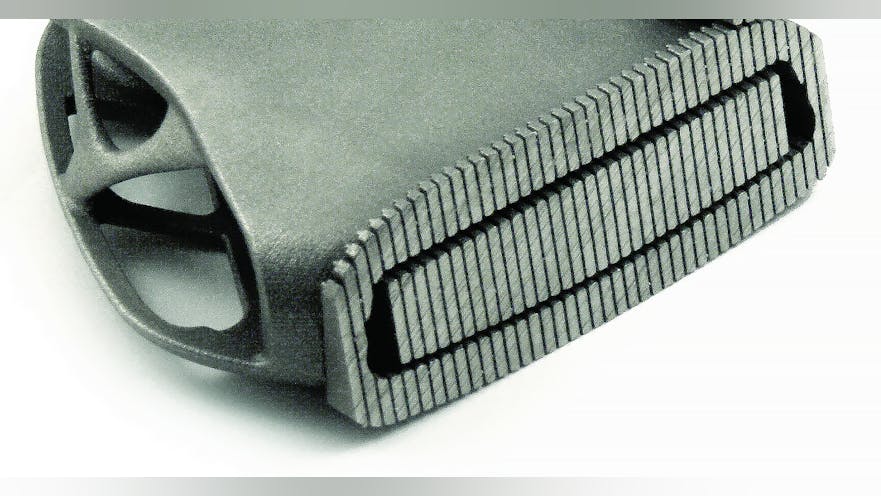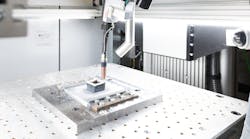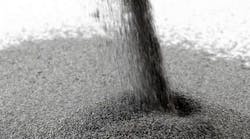Many metalcasters are golfers too, which may be the only explanation needed for the dedicated (or fanatical, or obsessive — choose your own descriptor) approach that many may take to getting their methods and procedures just right. On the links, and particularly on the green, mastering the details right will deliver the right results, right?
The connection from metalcasting to golf has been exhaustively explored (carbon or stainless steel? Aluminum? Cast metal driver heads or forged? Or precision milled?) Now make room in these debates for additive manufacturing. Equipment designer and manufacturer Callaway Golf Co. likes the sound of that possibility, and has engaged GE Additive’s consulting unit to help it integrate additive manufacturing processes to improve the performance of its putter products.
“Additive manufacturing is a new tool that is quickly going beyond the aspirational phase, and into the functionalization phase of the technology,” according to Callaway’s Brad Rice, director - R&D, Advanced Engineering.
GE’s AddWorks team works with consumer and industrial product group to apply additive-manufacturing technologies to improve existing product designs. According to an AddWorks mission statement. “Our assessment can determine if a part is appropriate for additive or better produced conventionally.” Their first assignment with Callaway has resulted in a redesigned Odyssey R-Ball Prototype putter head.
Callaway designs and manufactures its products in various ways to suit the performance and aesthetic (or in this case, acoustic) tastes of professional and amateur golfers around the world. The modified Odyssey R-Ball Prototype putter was developed in Japan as a "tour preferred" model, but its design had an acoustic signature unique to that local market. Callaway’s goal was to see how additive manufacturing could change that acoustic signature while retaining the preferred shape and performance.
So, what do acoustics have to do with a putter, or any club? The sound that the equipment produces as it strikes the ball matters to golfers, as golf equipment manufacturers have discovered in recent years as new materials and shapes have been adopted to improve force or handling, or some other function that matters to golfers.
A general trend in club design (especially drivers) has been to adopt lighter materials, especially composite metals, so that the products lighter will accommodate heads that golfers may customize to their preferred style of play. One objective is to achieve a head design with a more favorable "moment of inertia" — the response of the mass that determines how it transfers force to the ball — to achieve drive trajectories that are straighter. A problem with this emerged when golfers reacted negatively to the sound of the club striking the ball.
Frequently a putter head features cavities or other details that provide an audible indicator of optimal contact between the putter head and a golf ball. The sound created by the putter may indicate how well the golfer has contacted the ball. Thus, in the ears of the golfer, the right sound is fairly significant to effective putter design.
In the case of the Odyssey R-Ball Prototype putter, the GE AddWorks team determined the best way to optimize the acoustic effect was to add geometric features that were too difficult to achieve by conventional casting. The engineering consultants worked with Callaway’s design and engineering teams to apply additive manufacturing design practices and build upon the established design.
GE Additive offered electron-beam melting technology for design, prototype, or production scale additive manufacturing, converting CAD-based design information from powdered alloys in into three-dimensional metal structures by laser melting.
The AddWorks team provided Calloway with design insights drawn from past AM projects, and refined existing designs with new thermal stresses and overhang constraints to ensure the additive features were “self-supported or easily supported during the build.” The new putter shows the results of topology optimization in conjunction with acoustical mapping to create the optimal design.
As Callaway develops an additive manufacturing strategy, AddWorks team has provided it with information about additive processes and materials selection and is developing parameters and testing protocols to achieve desired material properties. It’s also working with Callaway to identify other parts that may be produced or enhanced by additive manufacturing.
“This project has allowed us to add value to Callaway’s business goals,” stated Chris Schuppe, general manager, AddWorks, GE Additive. “We’re also taking away many new learnings from our first project together, especially around aesthetics. We have also used additive technology to create an acoustic map, which is certainly a first for us. We’re looking forward to driving more successful projects with Callaway, as they continue their additive journey,” he added.











